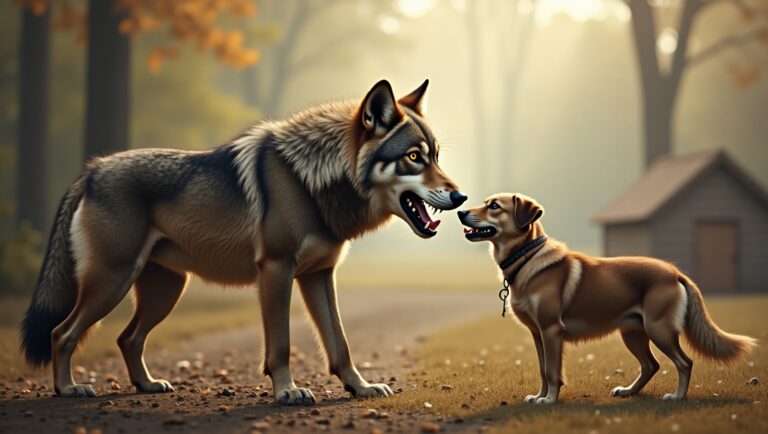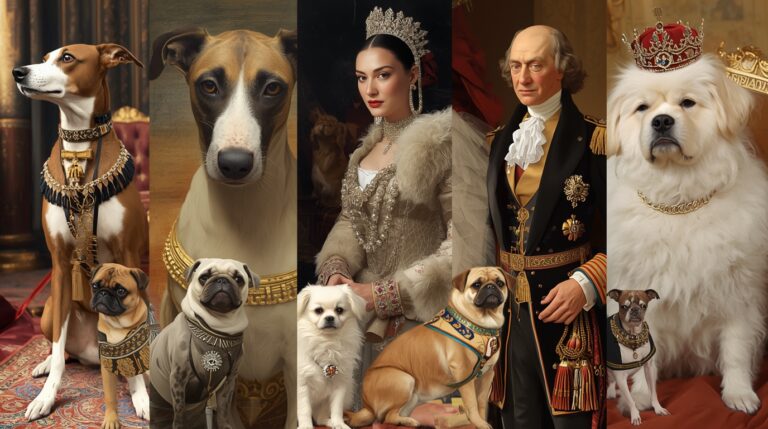History of Dogs in North America

Dogs and Their Deep-Rooted History in North America
The history of dogs in North America traces back over 15,000 years, making canines one of the continent’s oldest animal companions. This history involves early domesticated dogs, the migration of humans via the Bering Land Bridge, and significant changes due to colonial influence. Today’s American breeds carry both ancient and modern genetics, reflecting centuries of canine-human partnership.
Also read this Dog History by Region
The First Dogs on the Continent: Archaeological Evidence
Evidence from archaeological sites in regions like Illinois, Alaska, and British Columbia reveals that dogs were present long before European contact. These prehistoric canines were domesticated wolves, adapted to human life.
Example:
- The Koster Site in Illinois contains remains of 10,000-year-old dog burials, among the oldest known in the Americas.
Crossing the Bering Land Bridge
During the Pleistocene epoch, when sea levels were lower, humans and animals crossed from Siberia to Alaska via the Bering Land Bridge. Canis familiaris (domesticated dogs) traveled with these Paleo-Indian settlers, adapting to cold climates and harsh conditions.
Early Domestication: Partnership Between Humans and Dogs
Dogs served as hunters, guards, and companions, playing a vital role in the survival strategies of early human groups. This partnership accelerated the domestication process, turning wolves into loyal canine allies.
Dogs in Paleo-Indian Societies
Early societies like the Clovis culture (13,000 years ago) utilized dogs in various ways:
- Hunting assistance
- Guarding campsites
- Transportation (pulling primitive sleds)
Spiritual and Cultural Role Among Native Tribes
In many Native American tribes, dogs were considered spiritual intermediaries. They featured prominently in creation myths, tribal totems, and ceremonial rituals.
Example Tribes:
- Navajo, Lakota, and Cherokee viewed dogs as sacred beings.
Burial Practices and Rituals Involving Dogs
Dogs were often buried with humans, signifying their social and spiritual importance. Some burials included grave goods, suggesting dogs were honored companions.
Archaeological Sites:
- Stillwater Marsh (Nevada)
- Dust Cave (Alabama)
Fossil Discoveries Across North America
Excavations in places like:
- Alaska’s Interior
- Hudson Bay
- Midwest river valleys
…have unearthed canid remains, often accompanied by tools or human artifacts, pointing to a shared existence.
The Case of the Illinois Dog Burial (~10,000 Years Ago)
At the Koster archaeological site, the discovery of individual dog graves—each carefully placed and separated—suggests intentional ceremonial burial and long-term human-canine relationships.
Genetic Studies: Canine Mitochondrial DNA Analysis
Modern studies on mitochondrial DNA show that early North American dogs are genetically distinct from European dogs, with lineages now nearly extinct due to colonial canine displacement.
The Emergence of Prehistoric Breeds: Carolina Dog and Others
The Carolina Dog, also known as the American Dingo, is believed to be one of the few remaining dogs with genetic links to prehistoric canines. It roams wild in the Southeastern United States.
Dire Wolves vs. Early Domestic Dogs
While the dire wolf (Canis dirus) was native to North America, it went extinct around 10,000 years ago. Early domestic dogs coexisted with and possibly competed against dire wolves before their extinction.
Role of Dogs in Hunting and Survival
Dogs helped track large game like bison, deer, and elk. In cold climates, they provided warmth during sleep and helped in carrying firewood or food.
Inuit Sled Dogs and Arctic Adaptation
The Inuit developed specialized sled dogs like the Canadian Inuit Dog and Alaskan Malamute, bred for strength, endurance, and thick fur—ideal for life in the Arctic tundra.
Dogs in Mesoamerican Civilizations
The Aztecs, Maya, and Toltecs bred dogs for:
- Companionship
- Spiritual purposes
- Food in ceremonial sacrifices
One famous breed: the Xoloitzcuintli, or Mexican Hairless Dog, believed to guide souls to the afterlife.
Arrival of European Dogs: A Turning Point
With European colonization in the 1500s, breeds such as mastiffs, spaniels, and hounds were introduced. These dogs interbred with native dogs, gradually erasing ancient lineages.
The Impact of Colonization on Native Dog Populations
Native breeds were either absorbed, replaced, or marginalized. Colonizers often favored their own breeds, introducing diseases and genetic bottlenecks into native canine populations.
Development of Distinct Breeds in the 18th and 19th Centuries
North America saw the rise of breeds like:
- American Foxhound
- Boston Terrier
- Alaskan Malamute
These breeds emerged through selective breeding for hunting, companionship, or work.
Dog Breeds Originating in North America
List of notable native breeds:
- Carolina Dog
- Chesapeake Bay Retriever
- American Eskimo Dog
- Catahoula Leopard Dog
- Alaskan Klee Kai
Each breed evolved to meet specific climatic and functional needs.
The Role of Dogs in the Modern American Landscape
Today, dogs serve as:
- Therapy animals
- Service dogs
- K9 units in police/military
- Farm and herding assistants
Working Dogs in Ranching, Police, and Military Roles
The Belgian Malinois, German Shepherd, and Border Collie play critical roles in:
- Search and rescue
- Drug detection
- Livestock management
Canine Representation in Indigenous Lore and Mythology
Many tribes saw dogs as shape-shifters, protectors of the dead, or messengers of gods. The Blackfoot believed dogs protected human spirits on their journey to the afterlife.
Museum Exhibits and Scientific Research
Institutions like the Smithsonian and American Museum of Natural History display ancient dog skulls, tools, and genomic reconstructions, highlighting the co-evolution of humans and dogs.
Threats to Native Dog Lineages
Modern dog breeding practices threaten the purity of ancient bloodlines. The Carolina Dog and Inuit breeds are under conservation watch to preserve their genetic heritage.
Preservation Efforts and Modern Recognition
Efforts are underway to:
- Genetically catalog ancient breeds
- Promote preservation in native communities
- Educate the public on their cultural significance
Organizations like the American Rare Breed Association (ARBA) champion these causes.
Conclusion: The Everlasting Bond Between Humans and Dogs
From ancient Arctic hunts to modern suburban homes, the dog’s journey through North American history mirrors that of humanity itself. With ongoing efforts to preserve native breeds and acknowledge their historical significance, dogs continue to shape—and be shaped by—human lives.





